Spotland Stadium: Rochdale
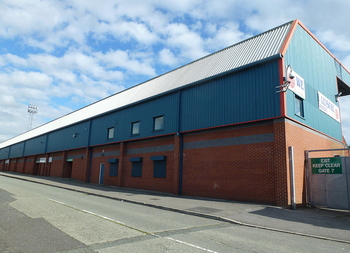
Mikey / Flickr.com
Built and opened in 1920, Spotland Stadium has been the home of Rochdale Association Football Club ever since. In 1988 The Dale were joined in their use of the ground by Rochdale Hornets Rugby League Club, meaning that the ground in Greater Manchester became a true multi-purpose venue.
The arrival of Rochdale Hornets and the use of the stadium as a location for rugby games opened it up to other uses and it was selected as a venue for the 2013 Rugby League World Cup. It was the first time that the ground had been used in a World Cup for any sport, with nearly 9000 people turning out to watch Fiji play Ireland.
In 2016 a deal was struck with Crown Oil for stadium naming right lasting 5 years, so the stadium is currently officially known as the Crown Oil Stadium.
Stats
| Spotland Stadium Stats | |
|---|---|
| Year Opened | 1920 |
| Capacity | 10000 |
| Average Attendance | 3632 |
| Record Attendance | 24231 (Rochdale v Notts County (1949)) |
| Pitch Size | 104 x 69 (7176) |
| Nickname | Spotland |
| Owner | Rochdale AFC |
| Clubs Hosted | Rochdale A.F.C., Rochdale Hornets RLFC |
| First Fixture | Rochdale A.F.C v Oldham Athletic (03.09.1907) |
| Rochdale Stats | |
|---|---|
| Year Founded | 1907 |
| Nickname | The Dale |
| Club Mascot | Desmond the Dragon |
| Rivals | Burnley, Oldham Athletic, Halifax Town, Stockport County, Bradford City, Accrington Stanley, Bury |
| Kit | Blue & White (Home) / Red (Away) / Black & White (Third) |
| Training Ground | Manor Farm |
| Shirt Sponsor | Crown Oil |
| Team Owner | A.S.A Kilpatrick |
| Record Goalscorer | Reg Jenkins (129) |
| Record Appearances | Gary Jones (459) |
Spotland Stadium Photos
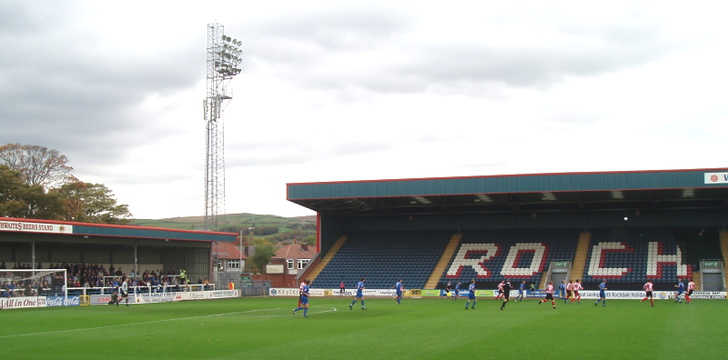
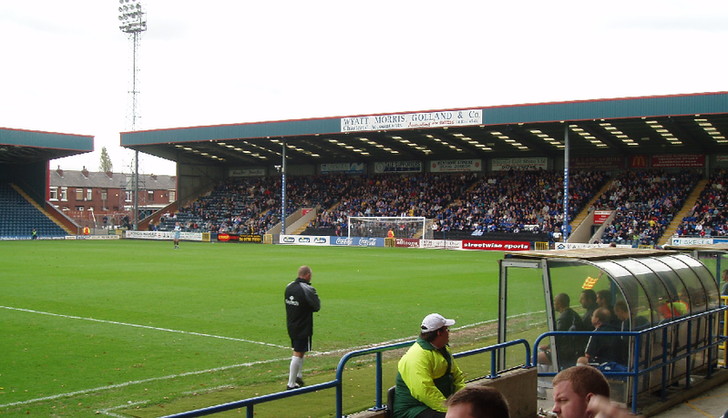
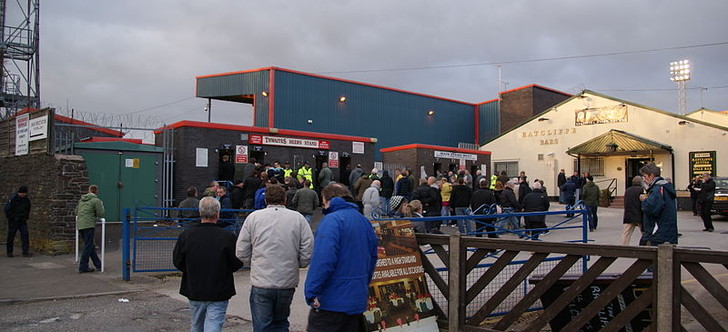
Bill Boaden [CC BY-SA 2.0]
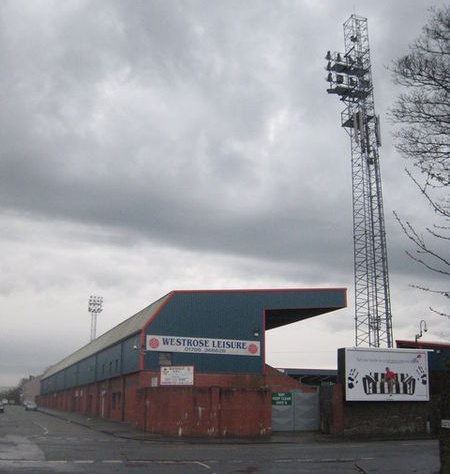
Rod Allday [CC BY-SA 2.0]
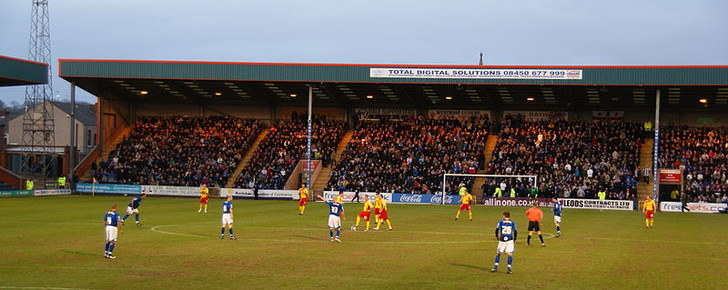
Bill Boaden [CC BY-SA 2.0]
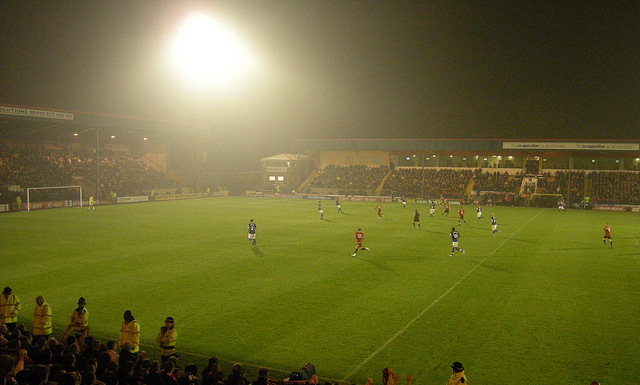
Matthew Wilkinson / Flickr.com
Spotland Stadium Seating Plan and Where to Sit
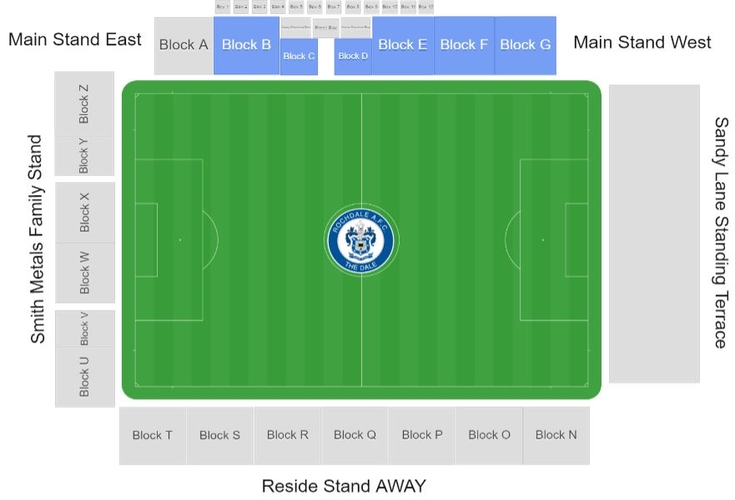
Spotland Stadium has four individual stands on each side of the pitch in the typically ‘English Style’. The Reside Estate Agents/Willbutts Lane Stand runs along one side and has a covered single-tier, with away fans taking up a portion of the seats. The Smith Metals Stand is behind one of the goals and contains a family section, whilst The Thwaites Beers Stand (or Sandy Lane as it’s affectionately known) is behind the other goal and is a terraced section. This is where the more vocal Rochdale fans tend to congregate. Finally, The David Kilpatrick Main Stand houses the dressing rooms, the dugouts and the hospitality suites.
Rochdale Ticket Prices
Ticket prices for Rochdale matches are generally quite easy to understand, with things that will affect how much you pay are how old you are and where in the ground you want to sit.
Here we’ve listed the cheapest and most expensive tickets for adults and concessions for each category:
- Adults – £18 – £22
- Concessions – £10 – £14
Dale Rewards Card holders will be entitled to £5 off admission prices, so well worth considering if you don’t have a season ticket.
How To Get Rochdale Tickets
Tickets are available through the club’s website, over the phone or in person by calling into the ticket office. There is an extra £1.00 to pay if you buy your ticket over the phone or online, and you can also buy tickets at the turnstiles for some games. Any all ticket games will be clearly noted in advance.
Where to Buy
Getting To Spotland Stadium
Rochdale is, as we’ve already mentioned, in Greater Manchester. If you can get yourself to the home of Manchester United and Manchester City, then you won’t be too far away from Spotland. Here are some of the usual routes that people consider:
Train – Rochdale Railway Station is around 35 minutes walk from the stadium, or two miles in old money. It is served by trains from Manchester and Leeds.
Bus – There are a number of buses that run from Rochdale centre to Spotland Stadium, with First Group being the company that runs the buses in the Greater Manchester area. Their website has an excellent journey planner on it.
Car – Spotland is about two miles from Junction 20 of the M62, so leave there and get on the A627(M). Head towards Rochdale town centre and then follow signs to the stadium.
By Air – Manchester Airport is where you’ll want to head if you’re flying in to see The Dale play. The connections to the train network from there are excellent, too.
Taxi – A taxi from Rochdale Railway Station to the ground will cost about £10 and take just over five minutes.
Parking Near Spotland Stadium
On-street parking is available near to the ground, with restrictions in place in some areas. There’s also parking at Oulder Hill Community School on Greave Avenue.
Useful Resources
- Parking - Just Park
Spotland Stadium Hotels
Nearby Manchester offers the bright lights and excitement of a big city, but Rochdale is not without some decent places to stay of its’ own. Here are some of our favourites:
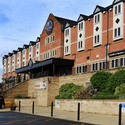
Village Hotel Manchester Bury - £60+
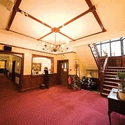
Quality Hotel Broadfield Park Hotel - £80+
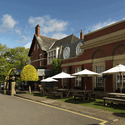
The Royal Toby Hotel - £80+
Pubs and Bars Near Spotland Stadium
Rochdale is very much a typical Northern town, filled with great personalities and nice little boozers secreted into different locales. Here are some of our favourite places to head for a pint:
The Cask & Feather
The Regal Moon
Turf Tavern
Facilities
Spotland is, to be fair, starting to show its age; that’s not to say that it’s not worth visiting, though. As with most clubs in the Football League you’ll find places to get a drink and a bite to eat before, during and after the game.
Prices
- Programme: £3
- Pie: £2
- Cup of tea: £1.5
- Beer: £3.2
Hospitality
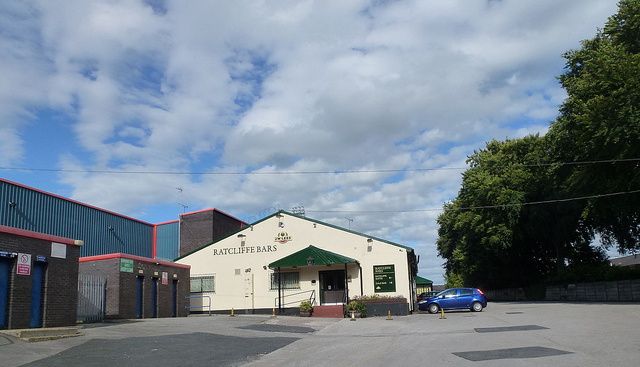
The main hospitality option at Spotland is The Club Lounge where you can enjoy a three-course meal before the game, cash bar facilities and a chance to meet the players and directors of Rochdale. Alternatively you could book yourself a box which comes with VIP treatment and a buffet amongst other things.
Private Hire
Spotland Stadium can accommodate anywhere from 10 to 150 people for a range of events and functions. They offer a licensed bar, a stage, full catering if required and a whole host of conference and meeting rooms ideal for any event you fancy hosting in a storied ground in Greater Manchester.
Stadium Tours & Museum
As things stand Rochdale only operate tours sporadically. There is no museum but the tours last around 1.5 hours and visit the match control tower and the TV gantry, as well as following in the players’ footsteps travelling from the dressing room, through the tunnel, and taking a seat in the dugouts.
Adults will pay £10 and juniors will pay £5, with the tours being hosted by Dave Sweetmore, the stadium announcer. He might even let you have a go at making your own announcement.
About Rochdale
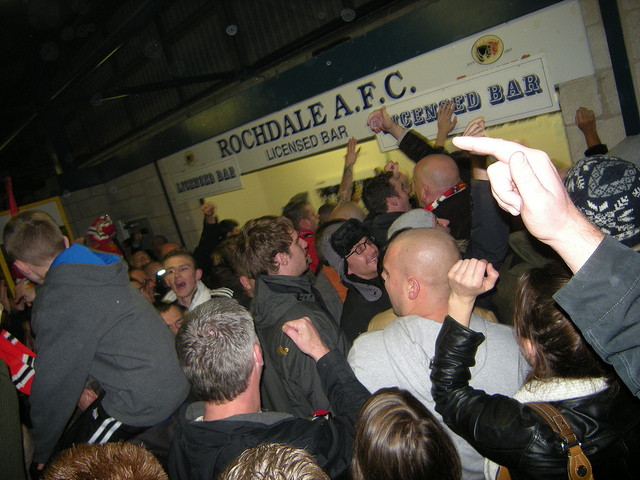
The Dale formed in 1907 but didn’t enter the Football League until 1921. They have spent their entire history between the bottom two leagues in England. They have been promoted to the second-tier on three separate occasions, once in 1969, again in 2010 and most recently in 2014. They’ve never won a competition but they did reach the League Cup final in 1962 and are one of only two teams from the lower leagues to do so.
Rochdale Association Football Club spent 36 consecutive seasons in the Football League’s lowest division, leading to some fans of opposition clubs to jokingly refer to it as ‘the Rochdale Division’. Since the Football League’s expansion to 92 clubs in 1950 The Dale has the lowest average position of all teams – 79th.
Spotland Stadium History
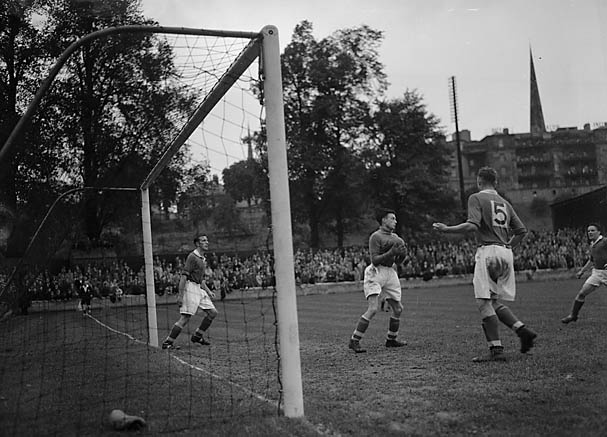
Spotland Stadium was constructed specifically for the purpose of housing Rochdale FC. The record attendance at the ground was set just after the Second World War when 24,231 people turned up to see The Dale play against Notts County. Sadly the club didn’t go on to expand much in the second half of the 20th Century, with the current capacity less than half of that which attended the post-war game.
One major reason why Spotland’s capacity was reduced was the response of the footballing world to the Taylor Report in the wake of the Hillsborough Disaster. All grounds in the Football League had to convert to all-seater, with Rochdale’s capacity dropping accordingly. That legislation was relaxed slightly for teams in the lower divisions and the stadium now includes some terraced sections.
Future Developments
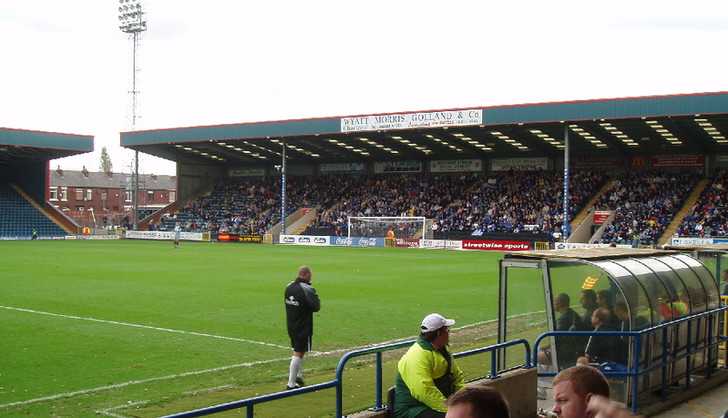
Improvements were made to the ground ahead of it being used to host a game in the 2013 Rugby League World Cup, so it is unlikely that further developments will come about in the near future.
It temporarily suffered a drop in capacity thanks to safety issues in 2019, but since they rarely reach capacity anyway this wasn’t too much of an issue.
